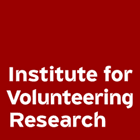Posted on May 25th, 2010 by Ellie Brodie in Project news
Tagged as: civic engagement, participatory mapping, place
Post a comment
David March (DM) lives in the field work area of Enfield. He took part in one of the local mapping workshops and has joined the Enfield Local Stakeholder Group. Ellie Brodie (EB) caught up with him to find out how he’s finding being involved in the Pathways project so far. . .
EB: What made you interested in being involved in the project?
DM: When I heard about the project through the Fox Lane and District Residents’ Association, I’d been thinking about how to develop the Broomfield Community Orchard Project and I was interested to hear other people’s thoughts on how to do this.
I’m also involved in a group called ‘Improving our Place’ - a network of people who trying to improve the area. I thought that the research you are doing sounded interesting and I wanted to hear more about it; both locally and nationally. Having worked as a town planner in London and have some experience of supporting local groups, I am interested in hearing about the ways communities engage in participation and work together.
EB: You’ve taken part in a mapping workshop and been to your first quarterly local stakeholder group meeting – how are you finding being involved in the project so far?
DM: The mapping workshop was fascinating. Although the workshop group was small, I thought the outcome was very interesting: [the map] opened my eyes to my area and everyone seemed to enjoy it. What came across to me was that people have a lot of enthusiasm for sharing information about their local area, and that we all have a different perception about what our ‘local area’ is. Trying to map it as a diagram or as a literal map presented our group with an interesting challenge. Luckily it all came together quite well – or so we thought!
‘Mapping’ is a very useful exercise to go through; so often if you’re consulted on something and it’s usually some time before you any tangible results; but by creating a map and putting it up on the wall and talking about it gave us a strong sense of ownership. It also struck me that this approach that could also be useful for Local Authorities in planning their services as it provides a really good snapshot of an area. Although you can never expect to be fully comprehensive with the information, it could be an effective way of involving people in the community who don’t normally participate - such as school children and older people.
I was new to the LSG, and was struck how members were able to take a wide view of the services that their organisations provide together with the comprehensiveness of their knowledge of the area. It’s a very different starting point from that of a local resident. I was also struck by how open the discussion was and how useful it was in terms of feeding info through to you [EB]. I would like to see another resident on the LSG as I have a certain view (as a middle aged male) about things, whereas a woman with young children will see the area differently.
EB: What would you like to see coming out of the project?
DM: Idealistically, one would hope that information and thoughts about the nature of volunteering in the area, and how to encourage the participation of people who don’t get involved, will be fed through to local services and organisations and help open all our eyes about what makes it possible. I’d like to see local organisations being drawn into the research in such as way that they can then make use of the outcomes. I see as one of the opportunities of the project is to consider the connections between highly structured and informal participation.
I’d also like to see the recommendations being something that are both digestible and interesting enough to put in the local paper in the form of a leaflet; something that grabs people attention and shows that the project is not another academic piece of work. It needs to be something that connects with local communities.
EB: If you had to sum up the area of Enfield we’re looking at in 3 words, what would they be?
DM: Post-war suburbia.


 ShareThis
ShareThis



